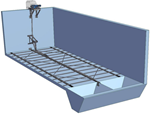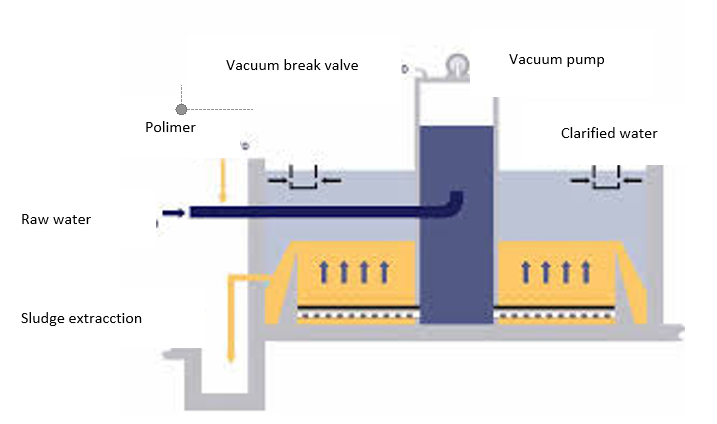Sedimentation:
Settling is the process in which the densest particles (chemically formed flocs) of water are separated essentially by the effect of gravity. There are different types of settling basins or sedimentation tanks, namely:
Conventional sedimentation tanks
It consists of a tank, which is divided into an inlet zone that is where the water is distributed evenly in the system, a sedimentation zone that is the place where the solid particles begin to fall to the bottom due to the action of gravity, a sludge area that is where the by-product of the decantation process is deposited and an outlet area where the clarified water is collected.

High-rate sedimentation tanks
It is a structure that is composed of a shallow tank, in which modules that can be circular, square, hexagonal, octagonal, or flat plates, among others, are arranged, in order to generate a greater treatment capacity of water in a shorter retention time than in conventional settling tanks.

Decantation with sludge blanket units
This type of settler permits maintaining a blanket of suspended sludge either hydraulically or mechanically. The coagulated —flocculated water arrives from the bottom of the tank and lows through this sludge blanket to emerge clarified at the top of the structure.

Bibliography
Titulo C Sistemas de potabilización. Recuperado el 18 de Julio de 2020. 2020. Ministerío de vivienda, Ciudad y Territorío. | https://www.catorce6.com/images/legal/Titulo_C_Potabilizacion.pdf
Teoría y práctica de la purificación del agua. 2000. ACODAL. | https://es.scribd.com/document/450177856/arboleda-valencia-teoria-y-practica-purificacion-agua-pdf
Referencies
decantacion | http://www.elaguapotable.com/decantacion.htm
Diferencia entre filtración y decantación | https://www.vedantu.com/chemistry/decantation